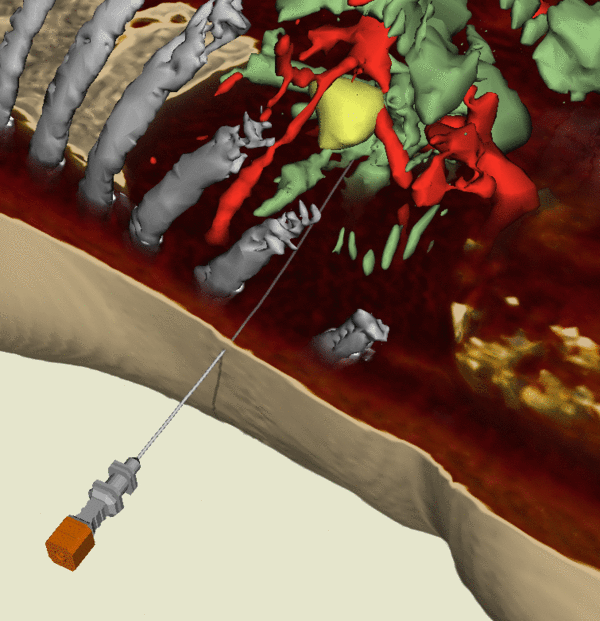Patient-Individual 4D Virtual Reality Simulation of Punctures and Radio-Frequency Ablations in Virtual Body Models with Breating Motion
Within the project we research methods for realistic 4D visuo-haptic VR simulation Virtual body models are animated by respiratory motion models. Applications are the patient-individual planning and training of punctures and radio-frequency ablation under respiratory motion. Static 3D image data sets of the patient are animated both by individual as well as mean-4D motion models that have been extracted from 4D image data and serve as a voxel-based description of real breathing movements. Using surrogate based 4D motion models regards also the variability of breathing in different respiratory cycles. By means of non-linear registration methods, the anatomical differences between the model and the patient's anatomy are compensated and the motion fields are transferred to animate the static 3D patient data. The 4D-motion models are integrated in a visuo-haptic framework the haptic-visual-driven interaction allows the puncture and ablation needle to interact with the breathing virtual body. For visuo-haptic 4D representation of moving 3D image data in real time special volume-based 4D rendering techniques are developed and optimized for the GPU. Furthermore near the diaphragm region, the effects of the respiratory movement on the biophysical simulation of RF ablations and the 4D needle path planning are compared to the planning and simulation in static 3D data. In addition to the evaluation of the different methods and system components, a user study about the VR training simulator enhanced by breathing motion is finally conducted.

The project is funded by the German Research Foundation (DFG: HA 2355/11-2).
Project Team
Dr. Andre Mastmeyer
Prof. Dr. Heinz Handels

- Research
- AI und Deep Learning in Medicine
- Medical Image Processing and VR-Simulation
- Integration and Utilisation of Medical Data
- Sensor Data Analysis for Assistive Health Technologies
- Medical Image Computing and Artificial Intelligence
- Medical Data Science Lab
- Medical Deep Learning Lab
- Junior Research Group Diagnostics and Research of Movement Disorders
- Former Medical Data Engineering Lab
